Top Ten Performances of 2017
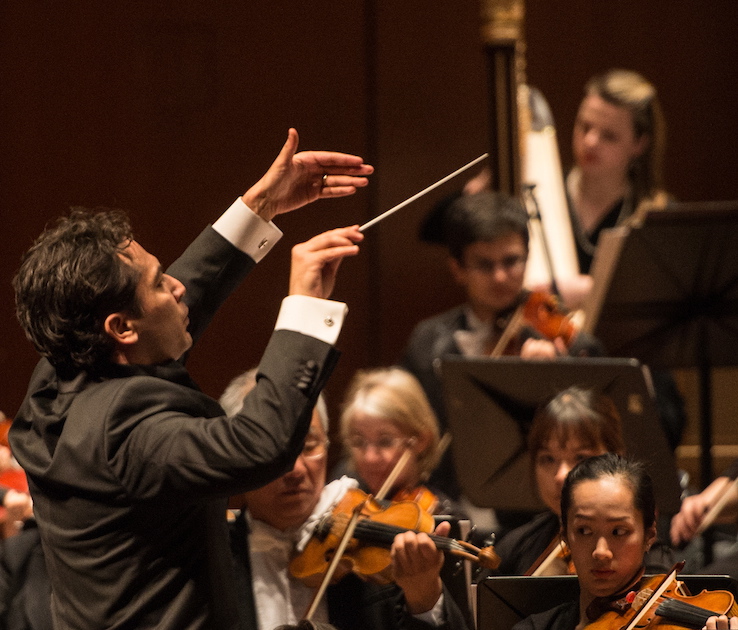
Photo: Wilson Parish
If Hurricane Harvey’s storm clouds had a silver lining, it was this: With Jones Hall out of commission until November, the Houston Symphony performed three classical programs in Rice University’s 1,000-seat Stude Concert Hall, the acoustic of which is far more flattering. The fullness and depth that the orchestra and Houston Symphony Chorus gave Dvořák’s exuberant Te Deum enveloped the audience in a way hardly possible at Jones. The orchestra’s playing blossomed even more richly in Mahler’s Symphony No. 4 and soprano Mojca Erdmann’s silvery tone helped the finale ascend toward heaven. (SB)
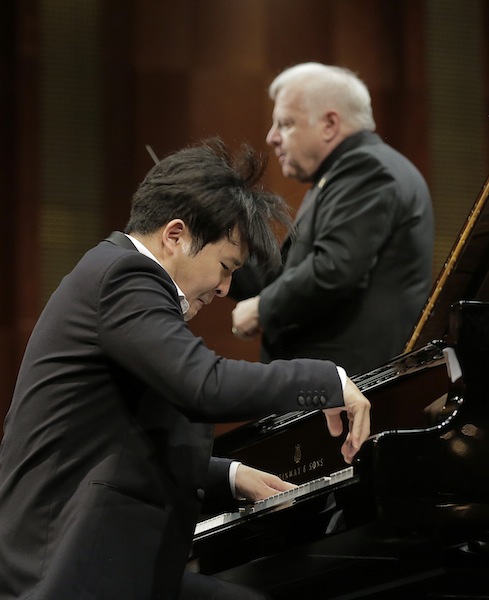
Photo: Ralph Lauer
2. Yekwon Sunwoo. Rachmaninoff’s Third Piano Concerto in the Final Round of the Cliburn Competition.
The quadrennial Van Cliburn International Piano Competition always produces at least one glorious transformative moment in which a previously little-known pianist moves into the international spotlight. Such was the case June 9 when South Korean Yekwon Sunwoo joined the Fort Worth Symphony Orchestra and competition conductor Leonard Slatkin to perform Rachmaninoff’s Third Piano Concerto in the final phase of his march toward the Cliburn gold. At 28, Sunwoo clearly owned a mature command of this mammoth work, opting for the more difficult cadenza options and speedier tempos; more impressively, he convincingly produced the complex momentum and careful pacing needed to carry through convincingly to the final glittering apotheosis. (WG)
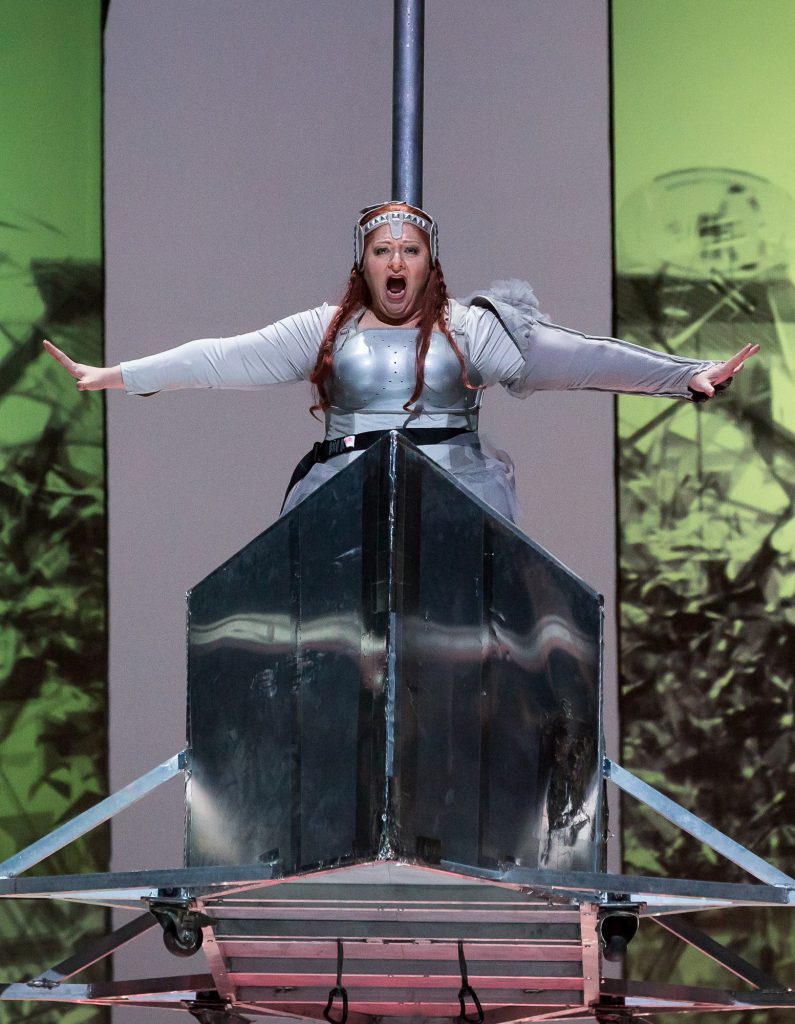
Photo: Lynn Lane
3. Houston Grand Opera: Wagner’s Götterdämmerung.
Houston Grand Opera capped off its four-year Ring of the Nibelung with the most potent performance of the cycle, theatrically and musically. The multimedia staging by the Spanish theatrical troupe La Fura dels Baus, brought back some of the previous installments’ most vivid imagery with compelling new vistas appearing as well. Christine Goerke’s full-throated vocalism set Brünnhilde’s music ablaze and Jamie Barton’s Waltraute added her own heft and eloquence. Simon O’Neill’s ringing tones made for a masculine, vital Siegfried. Conductor Patrick Summers and the HGO Orchestra supplied the tone-painting and momentum that bound the saga together. (SB)
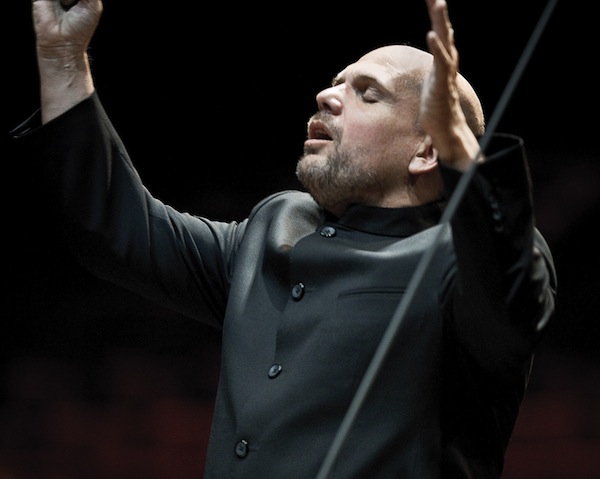
Photo: Hans van der Woerd
4. Jaap van Zweden and the Dallas Symphony Orchestra and Chorus. Elgar’s The Dream of Gerontius.
While British audiences enthusiastically embraced Elgar’s masterpiece The Dream of Gerontius not long after its debut in 1900, American orchestras have been slow to take up the work. Music director Jaap van Zweden gave Elgar’s oratorio its long overdue Dallas debut with the Dallas Symphony Orchestra in May. Strong solo performances by mezzo-soprano Alice Coote, tenor Paul Groves, and bass John Relyea contributed to the successful performance, but the real stars were conductor van Zweden, who provided perfect pacing and tempo throughout, matched by the gloriously rich sound of Joshua Habermann’s Dallas Symphony Chorus. (WG)
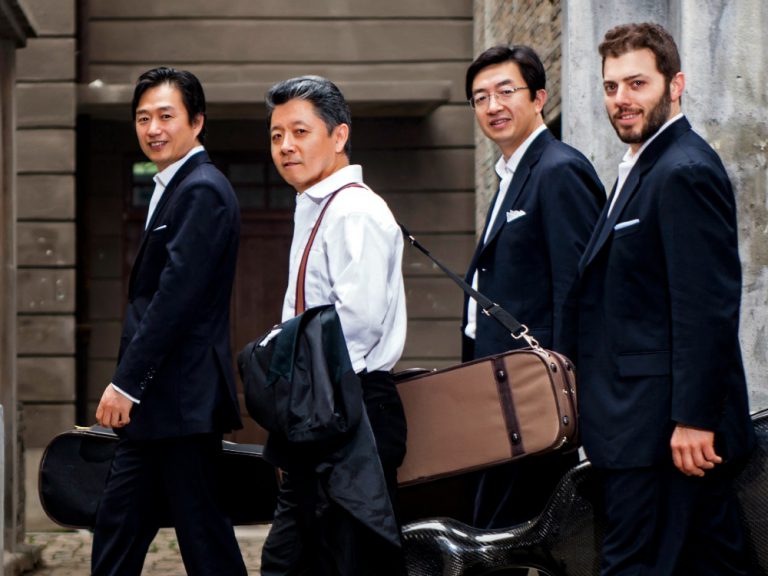
5. Shanghai Quartet. Chamber Music Houston.
The Shanghai Quartet may be a veteran ensemble, but its latest appearance for Chamber Music Houston revealed that it still has a youthful spirit. The group performed works that Mendelssohn, Frank Bridge and Brahms created or conceived in their 20s, and the passions came bursting forth in all three works. (SB)
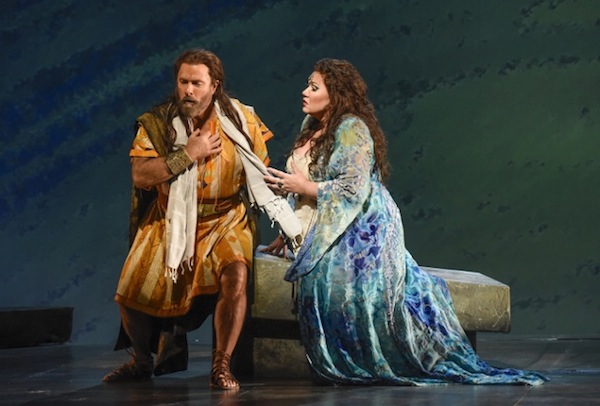
Photo: Karen Almond
6. Saint-Saëns’ Samson et Dalila. Dallas Opera.
The aptly nightmarish staging of the final scene of Dallas Opera’s production of Saint-Saëns’ Samson et Dalila brought this 19th-century warhorse to life in October at Winspear Opera House. Sets by Peter Dean Beck and costumes by Carrie Robbins provided perfect support for vocally and dramatically superb performances by tenor Clifton Forbis and mezzo-soprano Olga Borodina in the title roles. Dallas Opera music director Emmanuel Villaume applied his characteristic insight into the French repertoire in a production directed by Bruno Berger-Gorski. (WG)
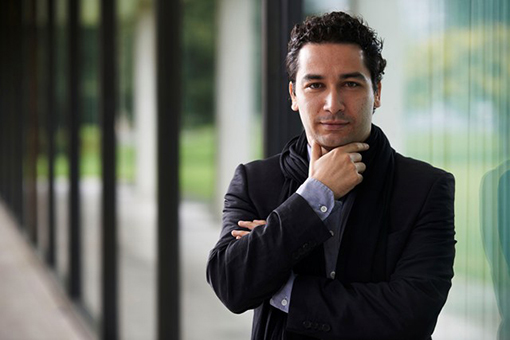
Photo: Martin Sigmund
7. Andrés Orozco-Estrada and the Houston Symphony. Shostakovich’s Symphony No. 5.
Though the Houston Symphony hasn’t officially said there’s a cycle under way, the orchestra and music director Orozco-Estrada have made Shostakovich’s symphonies a regular part of their musical diet. The May performance of the Fifth Symphony showed that the most familiar work of the cycle can still be arresting when it’s performed with drama and feeling. The orchestra’s power and virtuosity supplied the epic scope, but the heart of the matter came in the slow movement. The strings spun out their dark-hued tone in long, expressive phrases, and the plaintive wind solos contributed the most personal voices of all. (SB)
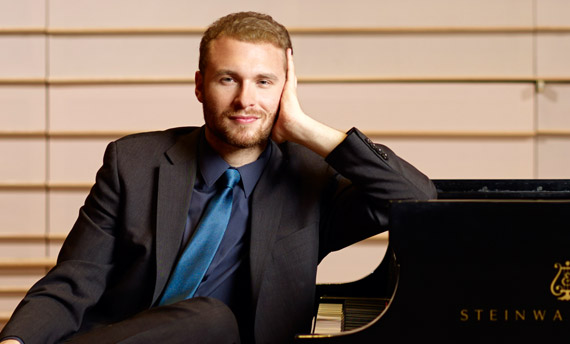
8. Adam Golka with the Fort Worth Symphony Orchestra. Mozart’s Piano Concerto No. 27.
Texas native Adam Golka returned to Fort Worth, where he spent his teenage years under the tutelage of the late Jose Feghali, on August 27 for a radiant exploration of Mozart’s Piano Concerto No. 27. Golka’s superb musical instincts combined with his flawless technical command to produce an unfailingly intriguing rendition of this classical-era masterpiece, soundly supported by the Fort Worth Symphony Orchestra and music director Miguel Harth-Bedoya. (WG)
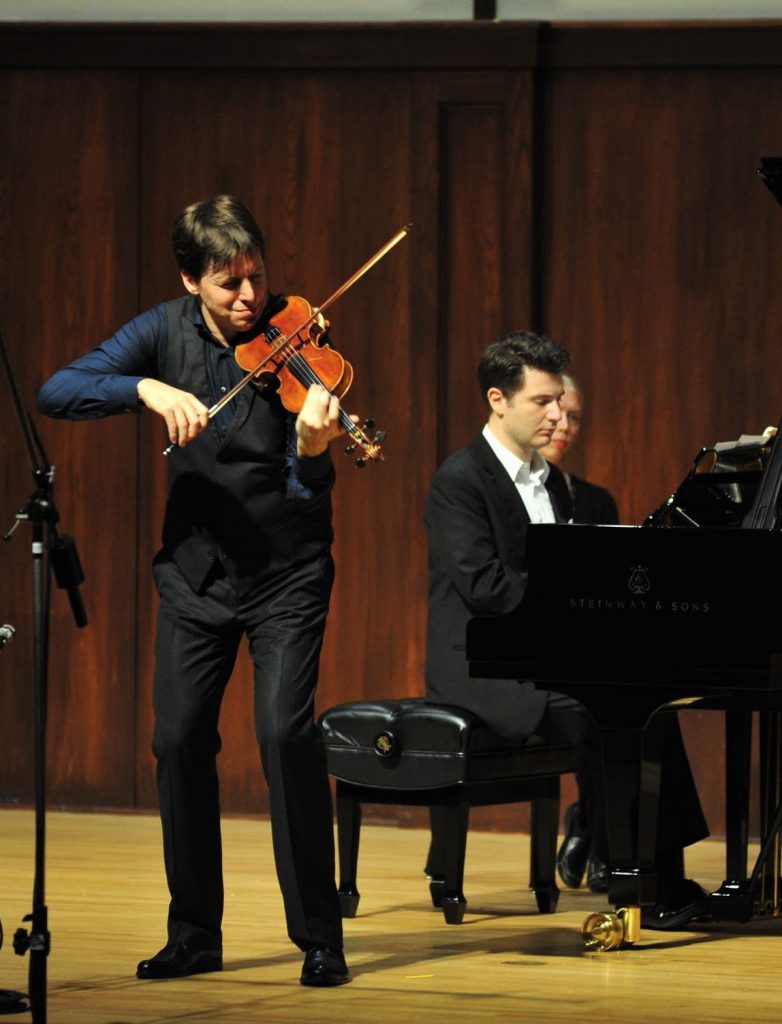
9. Violinist Joshua Bell and pianist Alessio Bax in Galveston.
Galveston’s Grand 1894 Opera House–which is altogether cozier than its name might suggest–supplied a congenial showcase for the deftness and dash that are among Joshua Bell’s calling cards.
The most arresting moment came amid the duo’s sunny performance of Mendelssohn’s Sonata in F major. As Bell was dashing through the finale, his bow suddenly flew from his hand and skittered across the stage. He bounded over, grabbed it, jumped back to his place, and picked right up again–all in mere seconds–then continued unruffled to the end. “In case you’re wondering, that happens once every 20 years,” Bell quipped before launching into the richest, warmest, most sweeping performance of the afternoon with Grieg’s Violin Sonata No. 3. How’s that for surmounting a potential disaster in style? (SB)
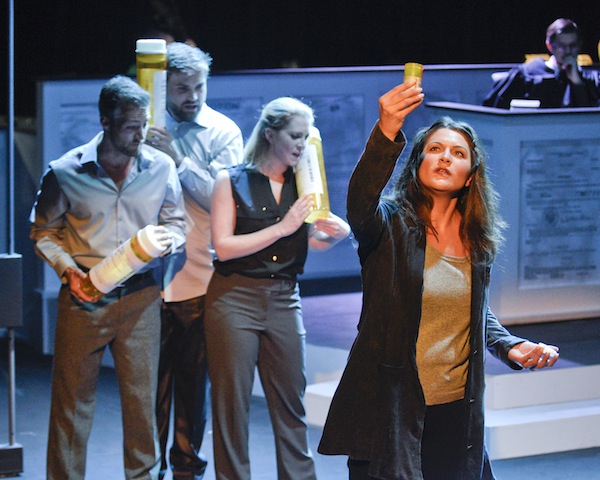
Photo: Karen Almond
10. Matthew Peterson’s Voir Dire at Fort Worth Opera.
Fort Worth Opera may be retreating from the daring experimentation of the past decade and a half, but the regime of now-departed general director Darren Woods ended with a powerful statement in the form of the world premiere of Matthew Peterson’s Voir Dire in April. Part courtroom drama, part scathing critique of American culture, Voir Dire avoids prettiness in favor of neo-Expressionist shock; Soprano Christina Pecce, mezzo-soprano Anna Laurenzo, tenor Andrew Surrena, and baritone Trevor Martin navigated this complex, relentlessly intriguing music drama with vocal and dramatic aplomb, ably supported by conductor Viswa Subbaraman. (WG)
Honorable Mentions
Jaap van Zweden and the Dallas Symphony Orchestra and Chorus focused on the dark drama of Bach’s St. Matthew Passion in March and April; Dallas Opera’s production of Bellini’s Norma presented fine bel canto singing from Elza van den Heever in the title role, along with a few cheesy directorial decisions; Dallas Opera’s March production of Britten’s Turn of the Screw created a nicely spooky production updating the setting to Britten’s lifetime. (WG)
Houstondammerung
When the waters of the Rhine rose up and cleansed the world at the end of Götterdämmerung last spring, everybody thought Houston Grand Opera was finished with deluges. But no. As Hurricane Harvey inundated Houston in August, HGO’s home–the Wortham Theater Center–took on so much water that it had to close down for the entire 2017-18 season for repair. HGO found a refuge in the city’s convention center, where the company set up a temporary theater in an exhibit hall. The show goes on. (SB)
Best performance of a masterpiece we may never hear in Dallas again
Boris Berman performing John Cage’s Sonatas and Interludes at the Nasher Sculpture Center in February. (WG)
Best chamber performance
The Dover Quartet’s neatly packaged and ultimately profound presentation of works of Barber, Smetana, and Shostakovich at the Kimbell Art Museum, presented by the Chamber Music Society of Fort Worth in February. (WG)
Best presentation of music by a living composer
The Cliburn Foundation’s program devoted entirely to works of Gabriela Frank at the Fort Worth Museum of Modern Art in April. (WG)
Worst entrenched tradition
The Fort Worth Symphony now plays the National Anthem at the beginning of every concert. Overfamiliarity undermines and trivializes what should be a rare and meaningful ritual. (WG)
Worst performance idea
Conducting Ravel’s Concerto in G from the piano, which is what guest conductor/pianist Teddy Abrams attempted to do with the Fort Worth Symphony in October. Hint: if there is an entire movement in which the pianist must have both hands on the piano, don’t try to conduct at the same time. And if you don’t have the piece memorized completely, don’t try this trick at all—it’s like juggling flaming batons. (WG)
Most embarrassing and worrisome sequence of events
1: The Fort Worth Opera fires general director Darren Woods in February, just a few weeks before the company’s annual spring season. 2. In an obvious overreach of resources, the Fort Worth Opera announces a 2018 season to include Wagner’s Das Rheingold. 3. In an overdue display of good sense— lending some hope to the situation—the company cancels Das Rheingold in October.
We’ll still get Donizetti’s Don Pasquale and Piazzolla’s Maria de Buenos Aires next spring, which, given the company’s traditions and capabilities, makes more sense, even though it makes for a short and decidedly skimpy season. (WG)
Four Questions for 2018 and beyond
Can 2017 Cliburn gold medalist Yekwon Sunwoo’s sullen, almost introverted stage presence carry him forward into the celebrity-driven culture of the 21st century? Sure, he’s a brilliant, fully-developed musician, and he’s polite on stage, of course, and bows at the proper times. But it would be nice for us and good for him to seem to care that we’re out there listening.
How long will it take van Zweden to maneuver former Dallas Symphony principal horn David Cooper, arguably the world’s greatest horn virtuoso, away from his current post in Berlin to the New York Philharmonic?
It’s great that the Fort Worth Symphony is back in business after a months-long strike throughout the fall of 2016, and it’s safe to say that everyone in Fort Worth is glad that the orchestra continues to function. But what happened to those not-unreasonable dreams a few years back of establishing a major orchestra in Fort Worth?
And, of course, the biggest question of all: Who will take Jaap van Zweden’s place at the helm of the Dallas Symphony? This fall’s guest conductor list yielded no heavy favorite; it will be interesting to see how guest conductors perform this spring, and who’s on the list of guest conductors/candidates for the 2018-19 season. (WG)